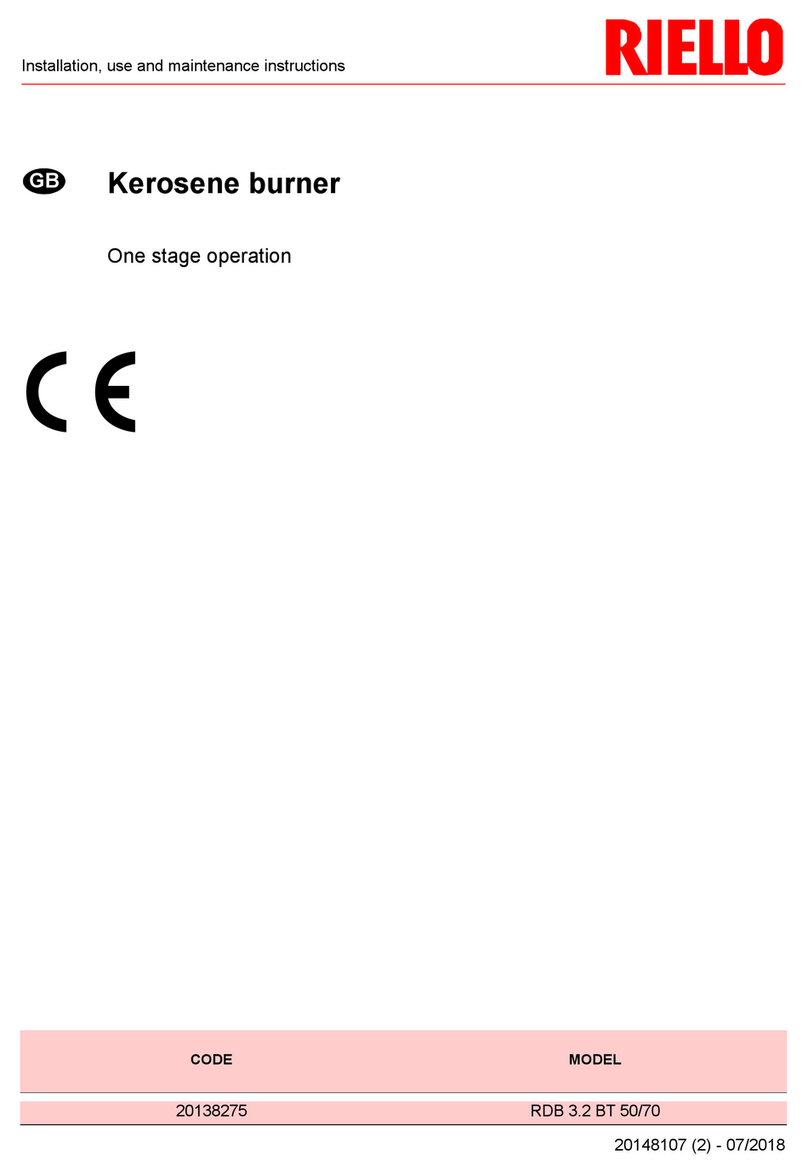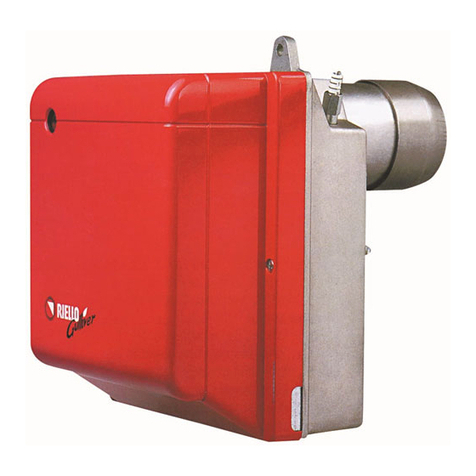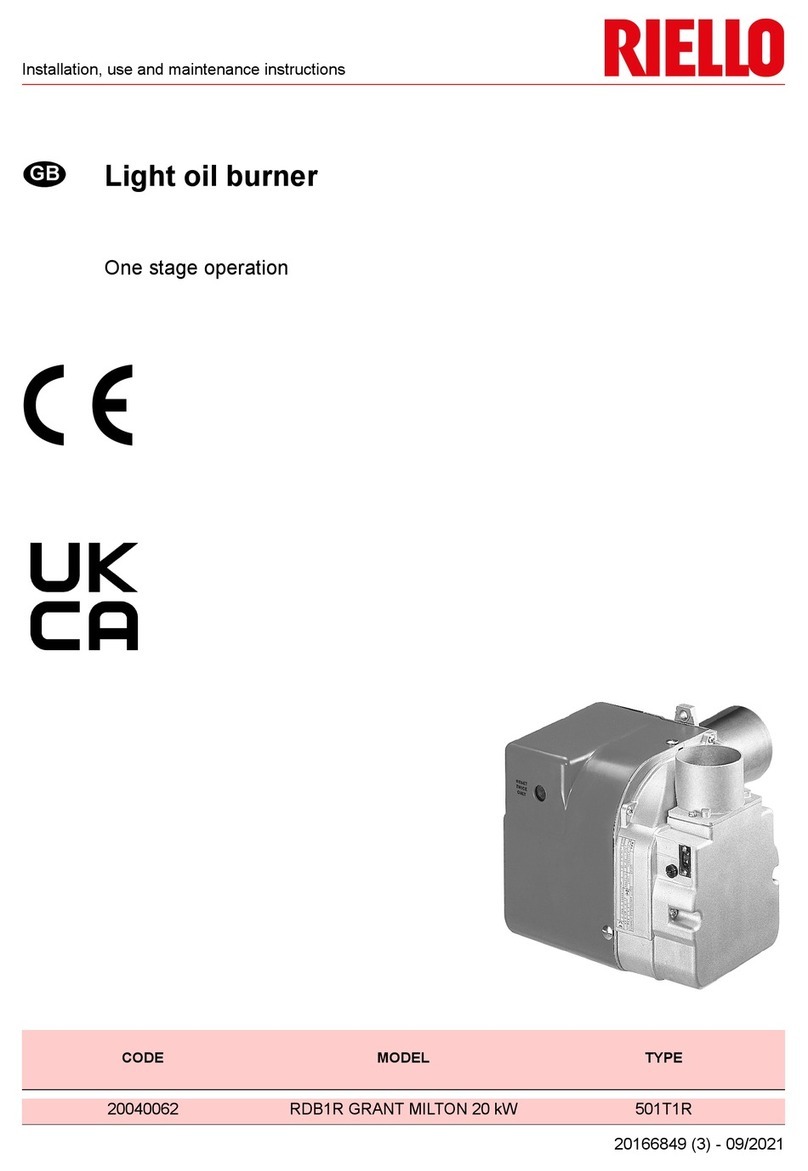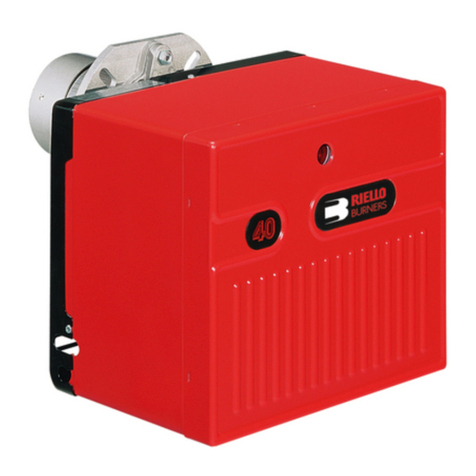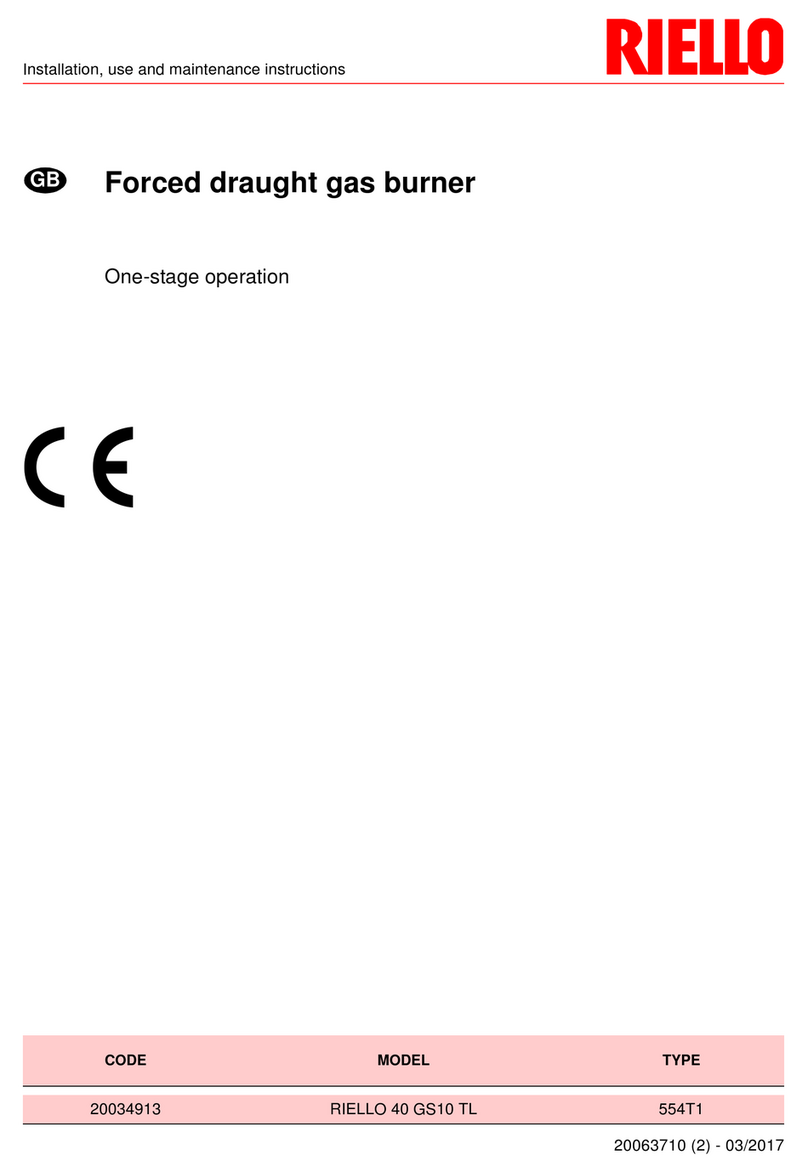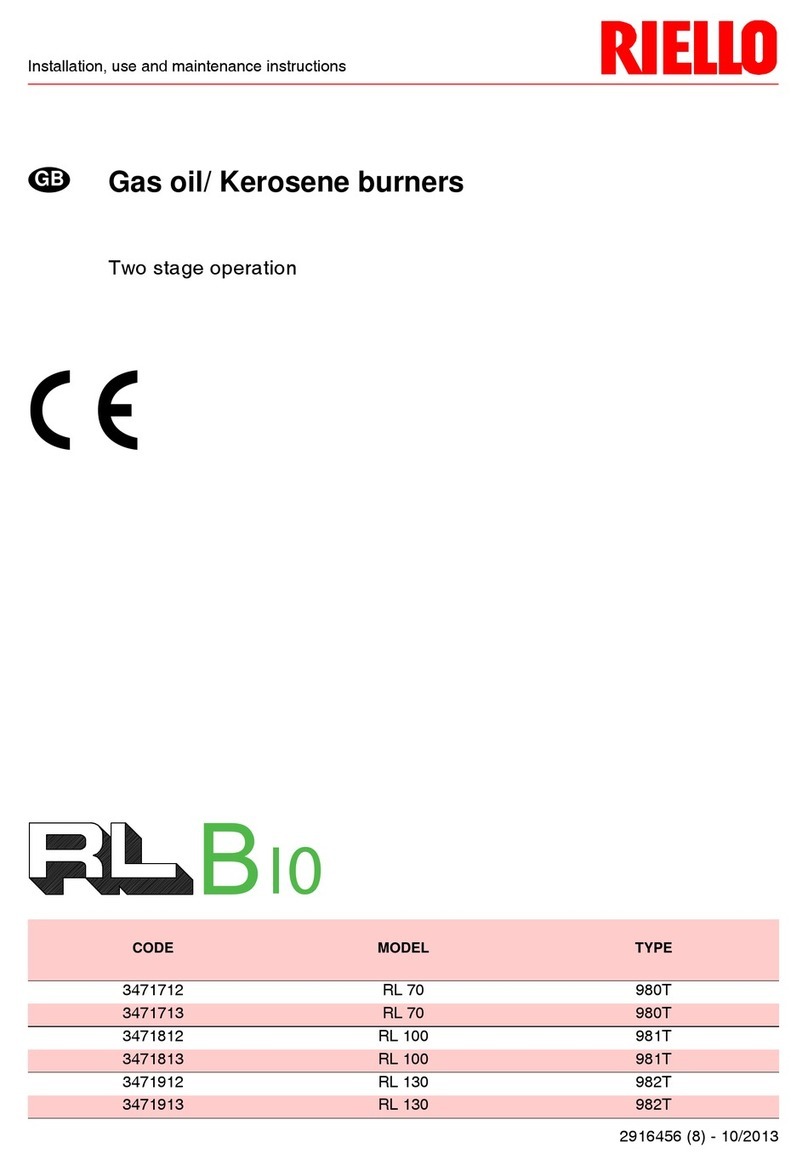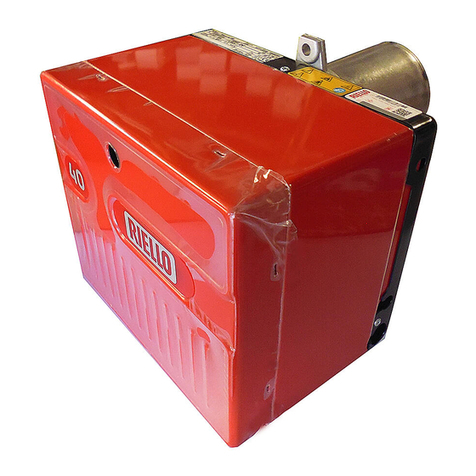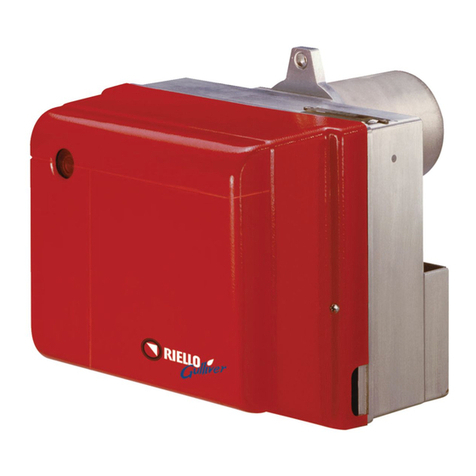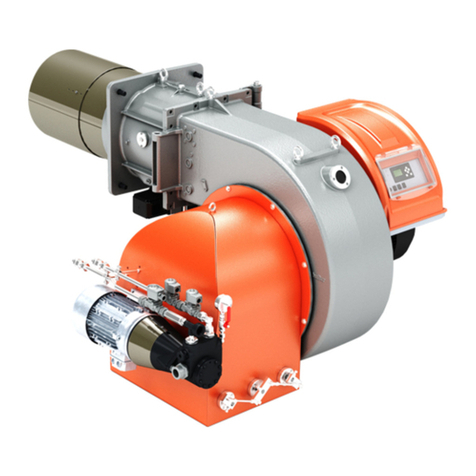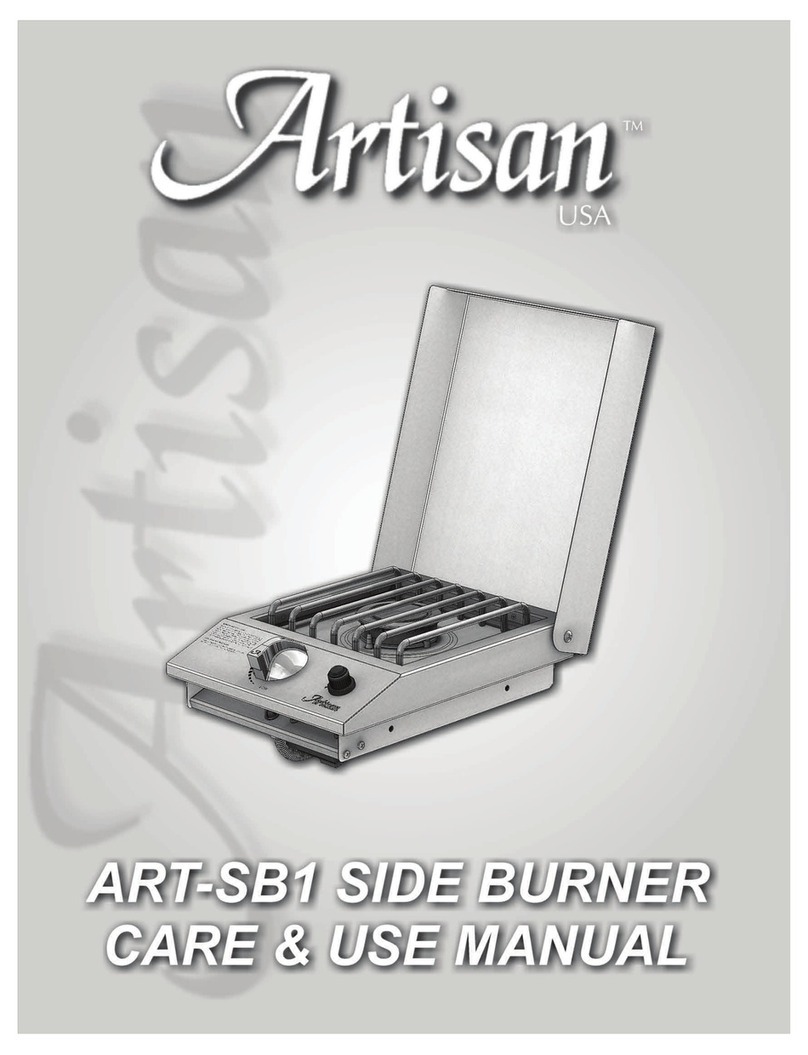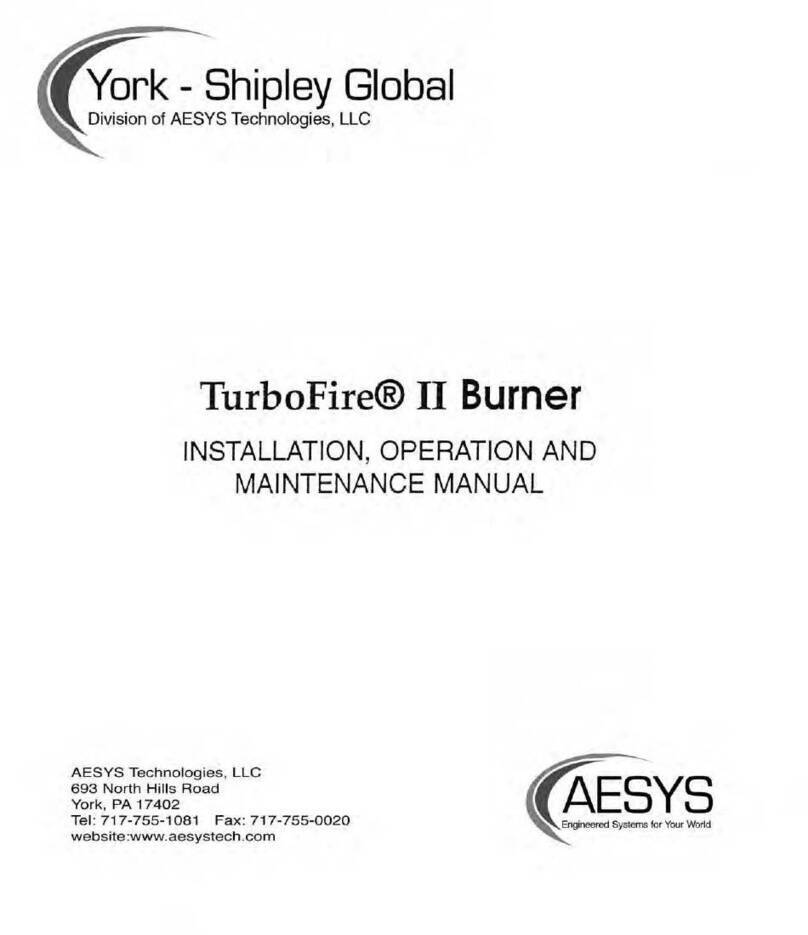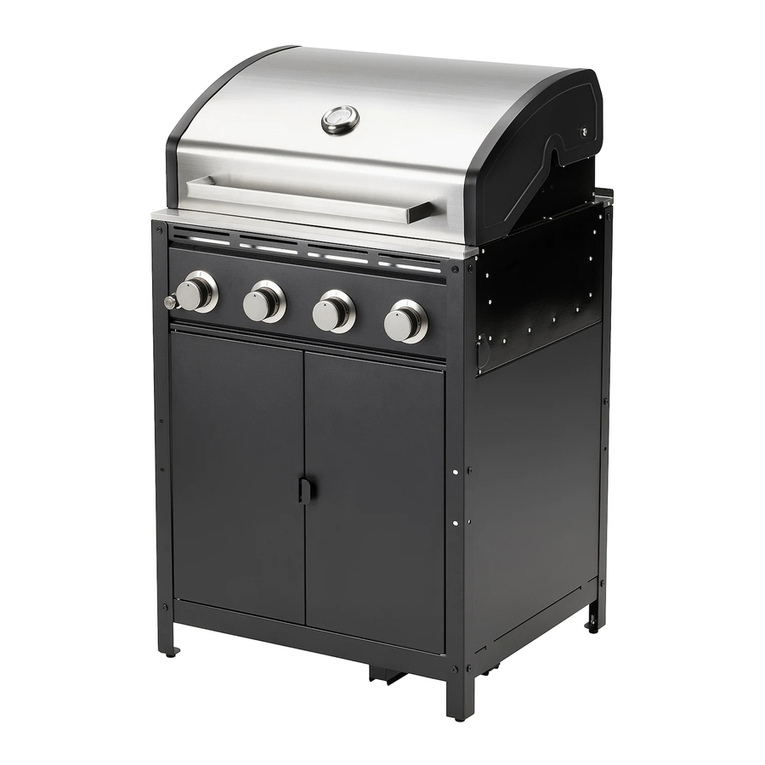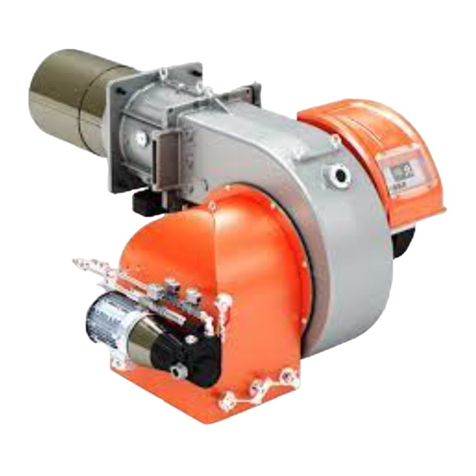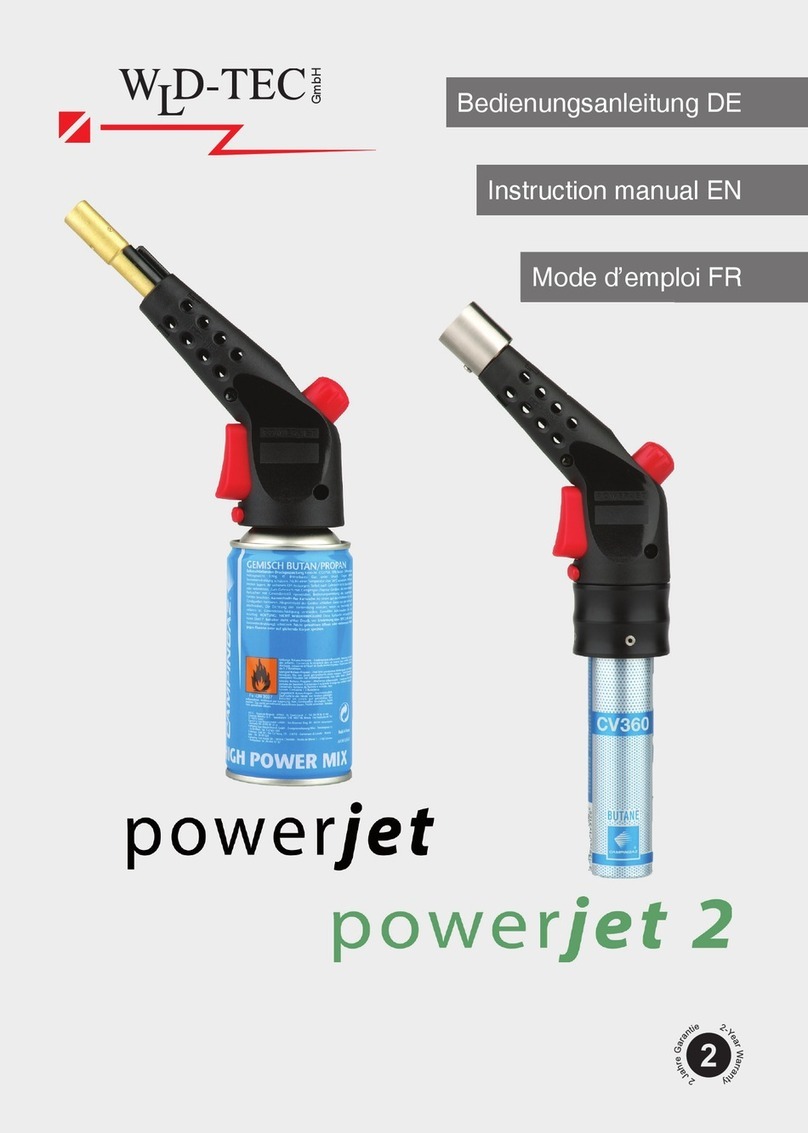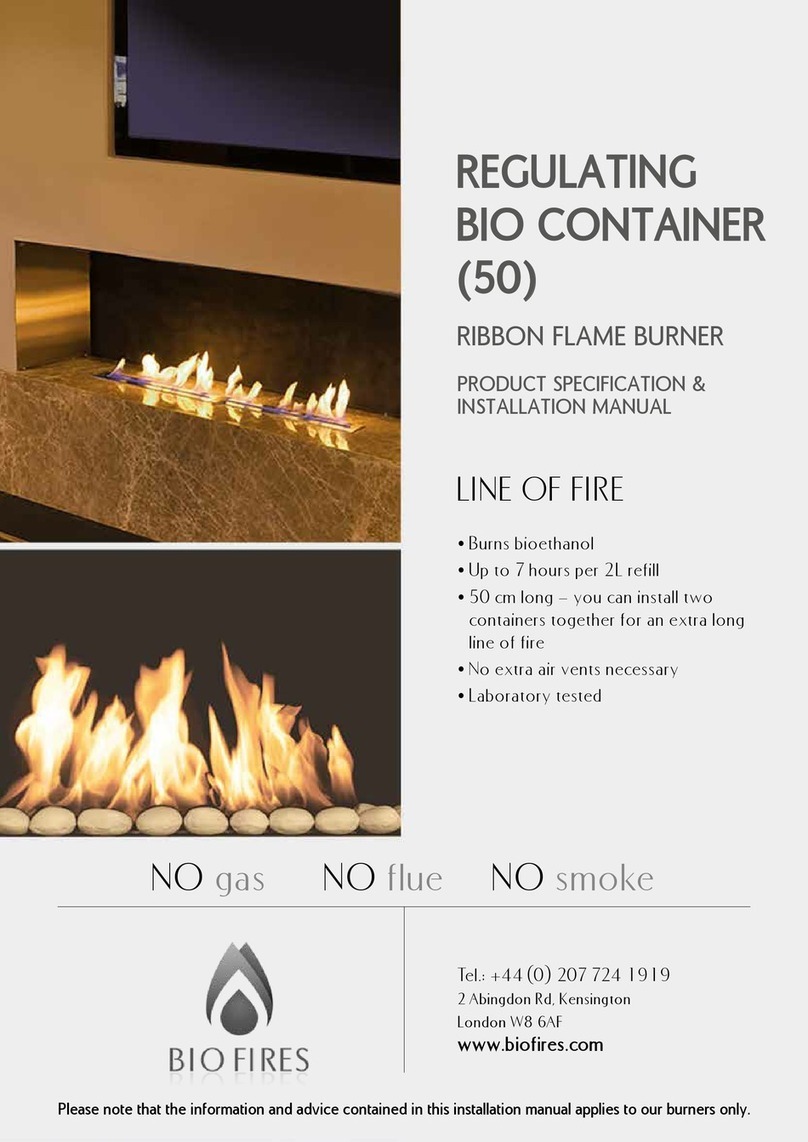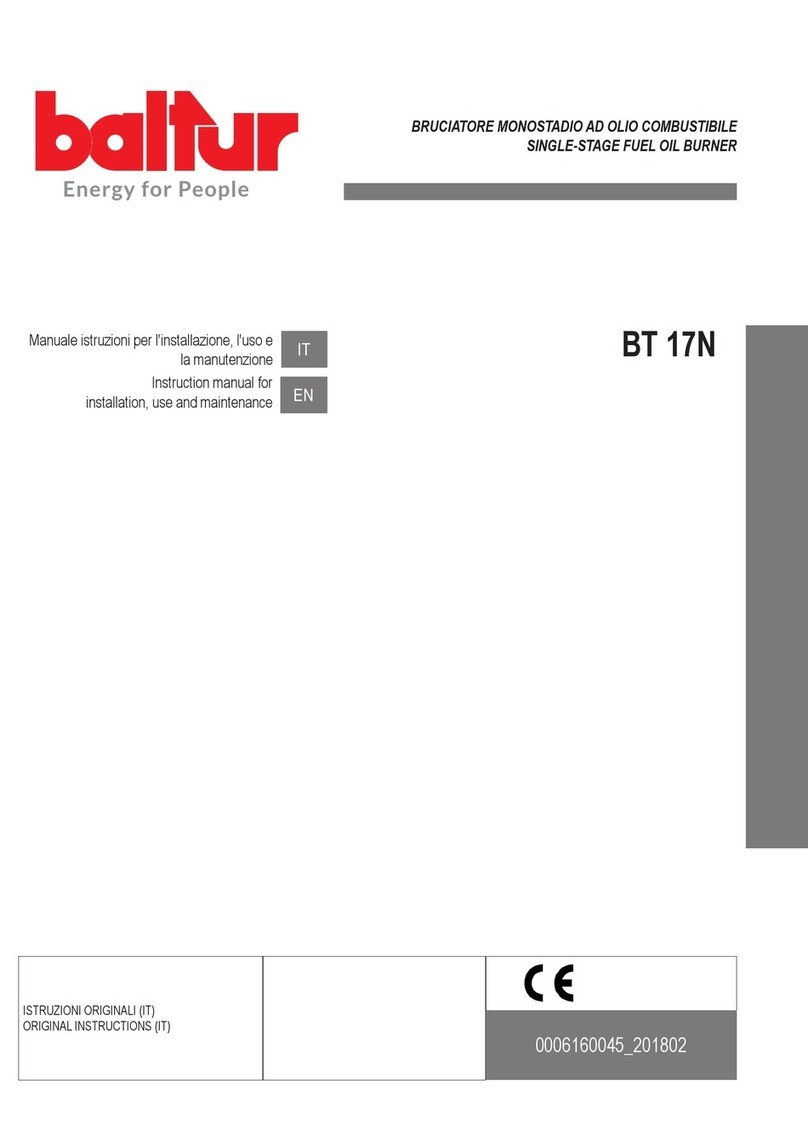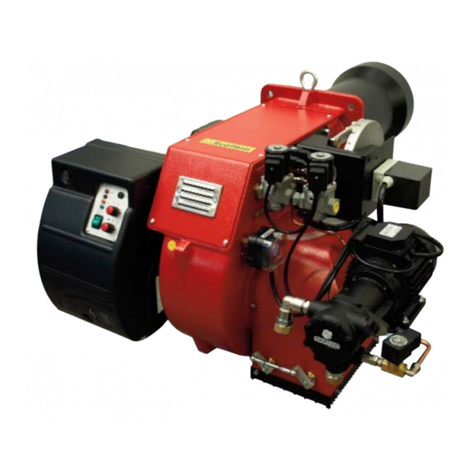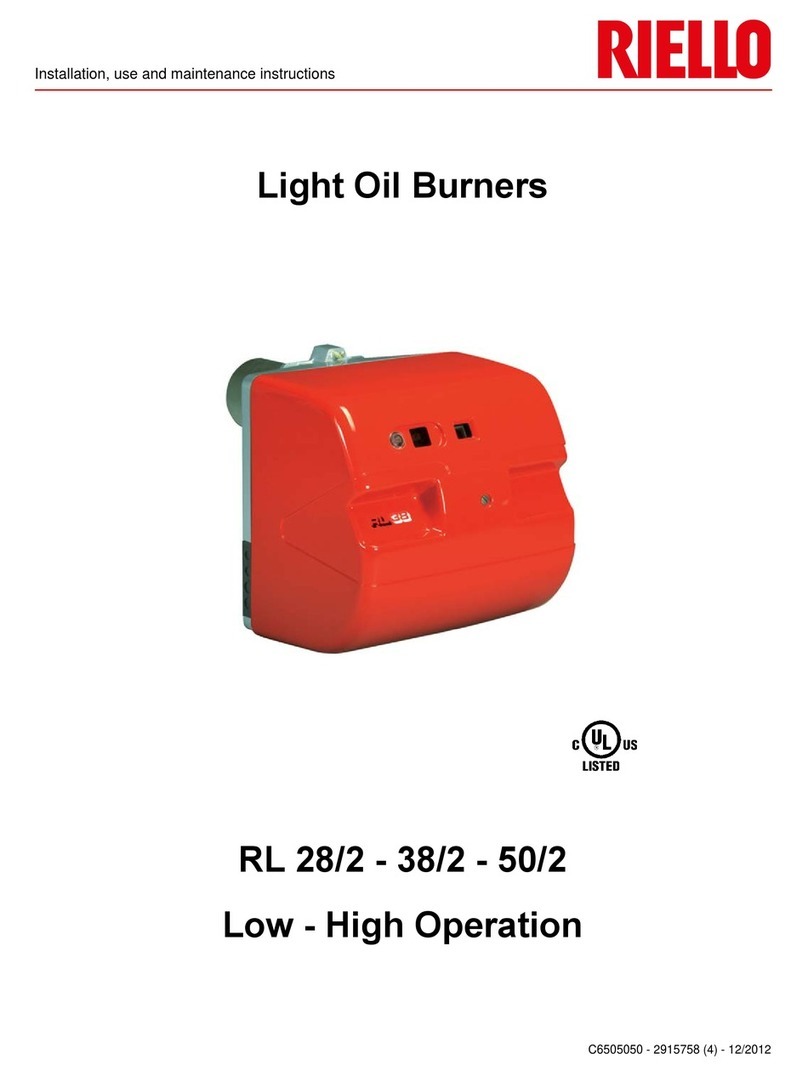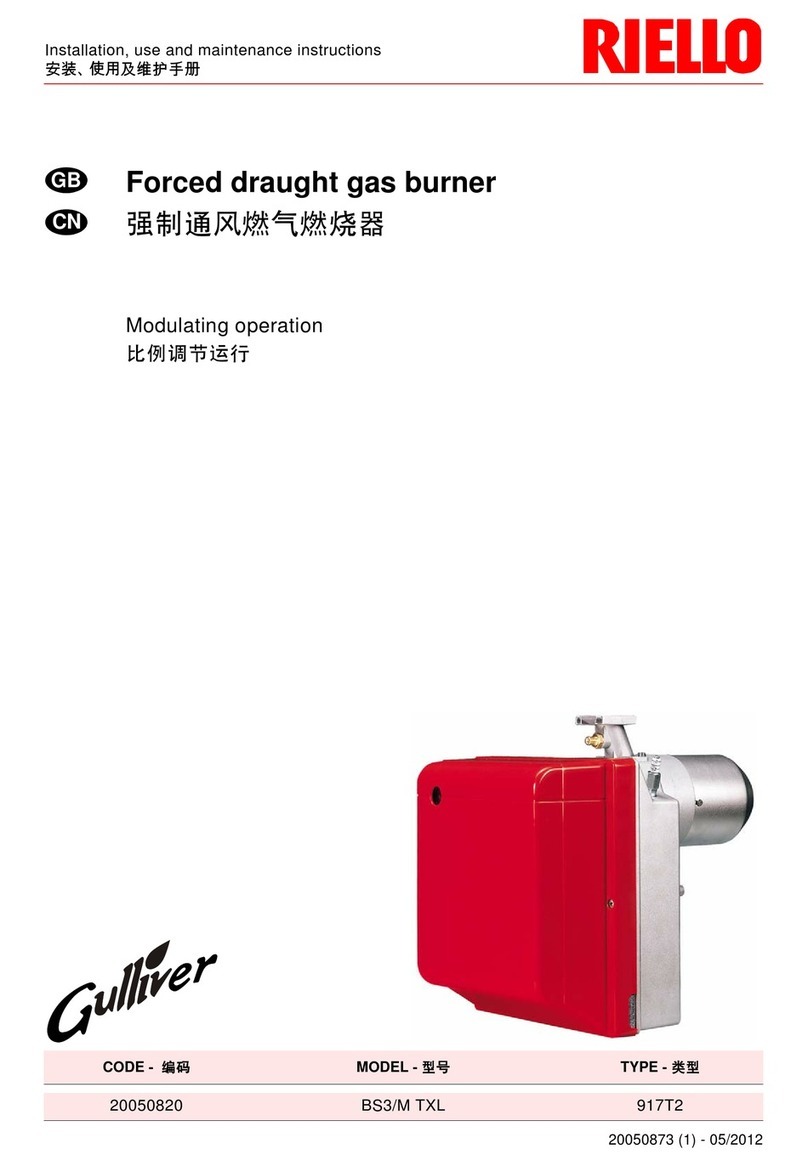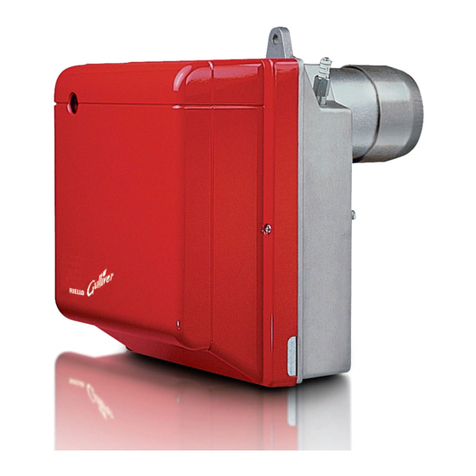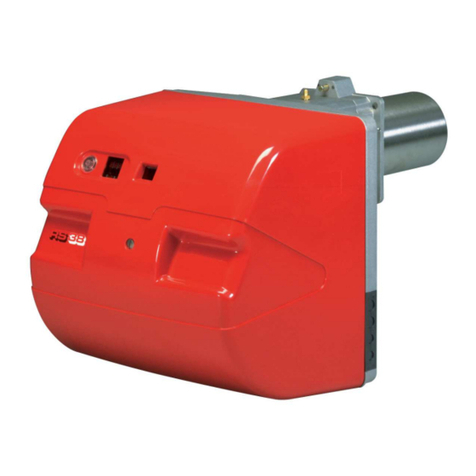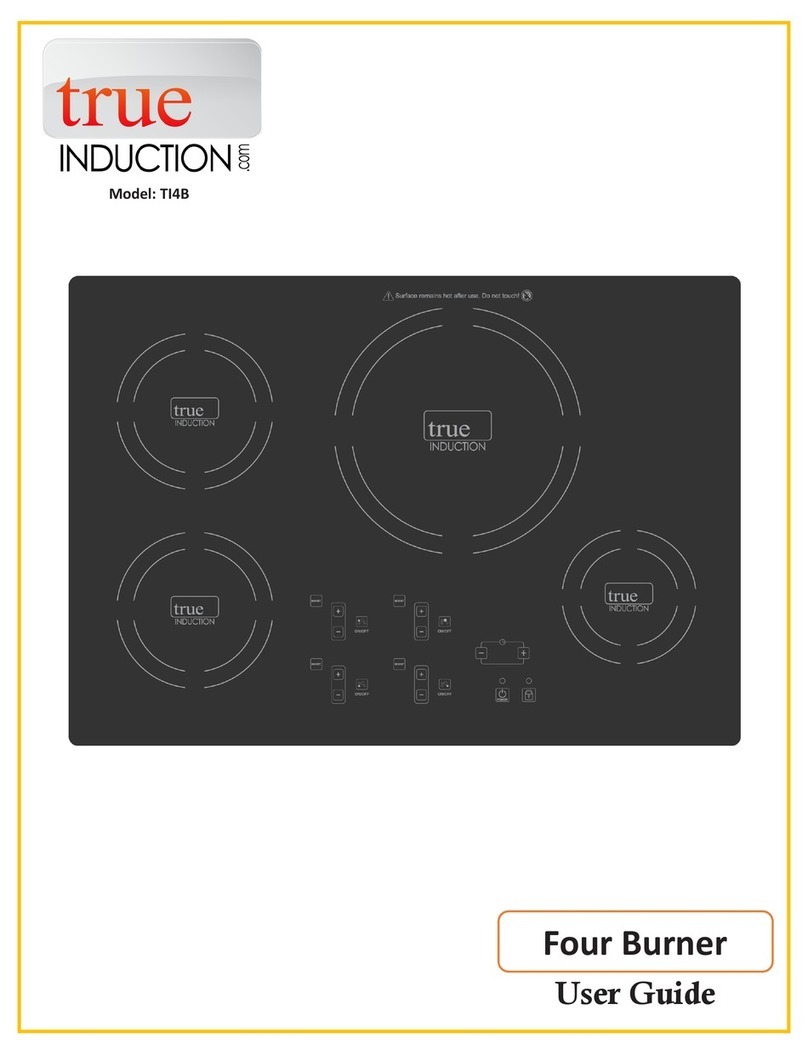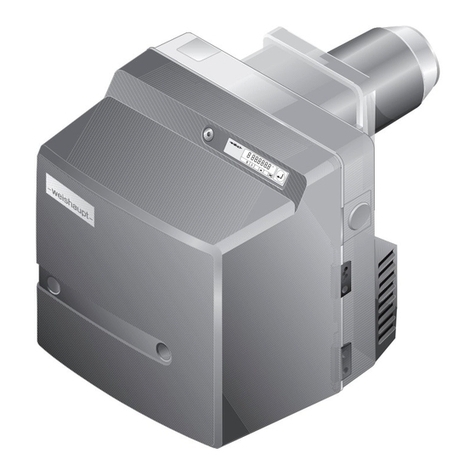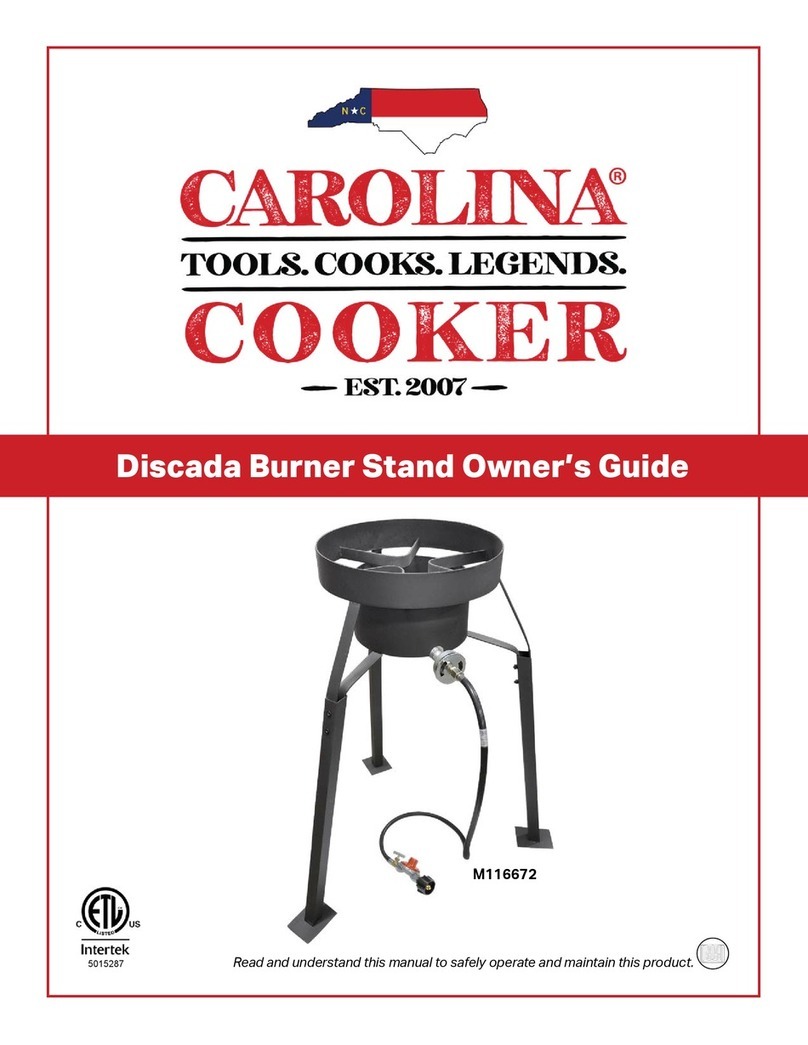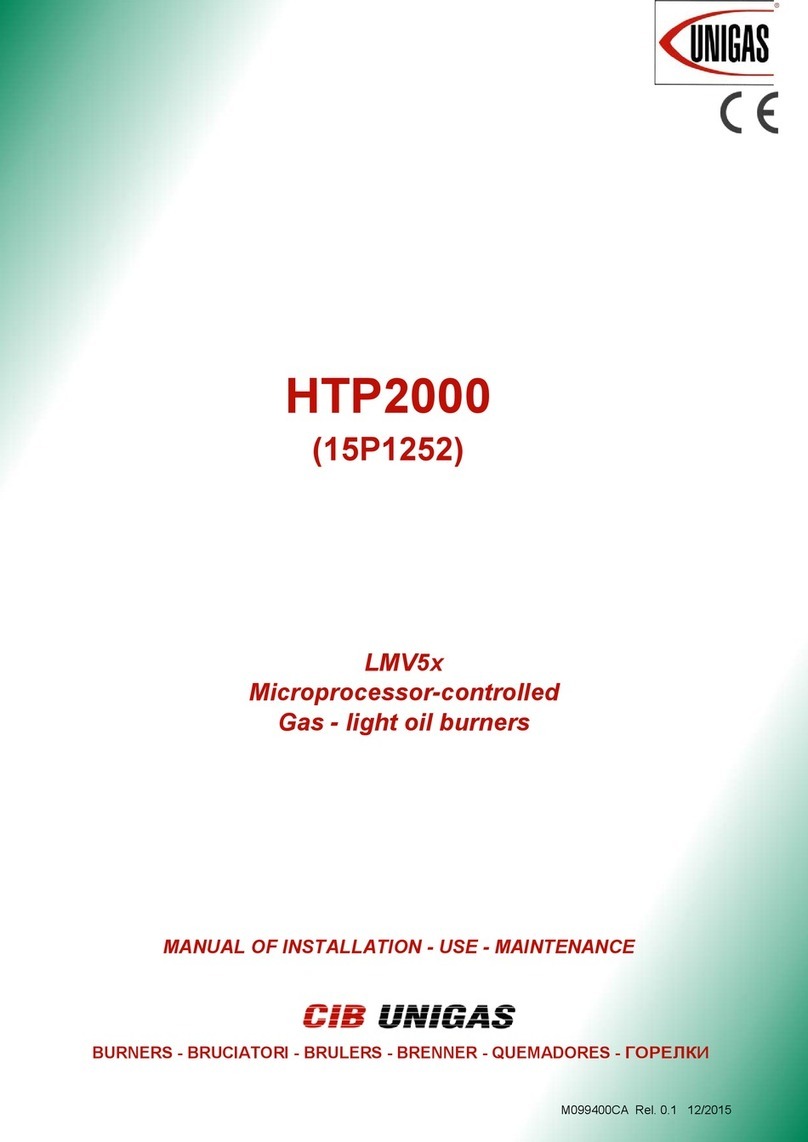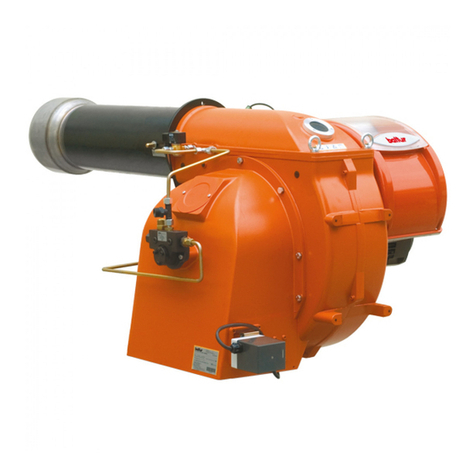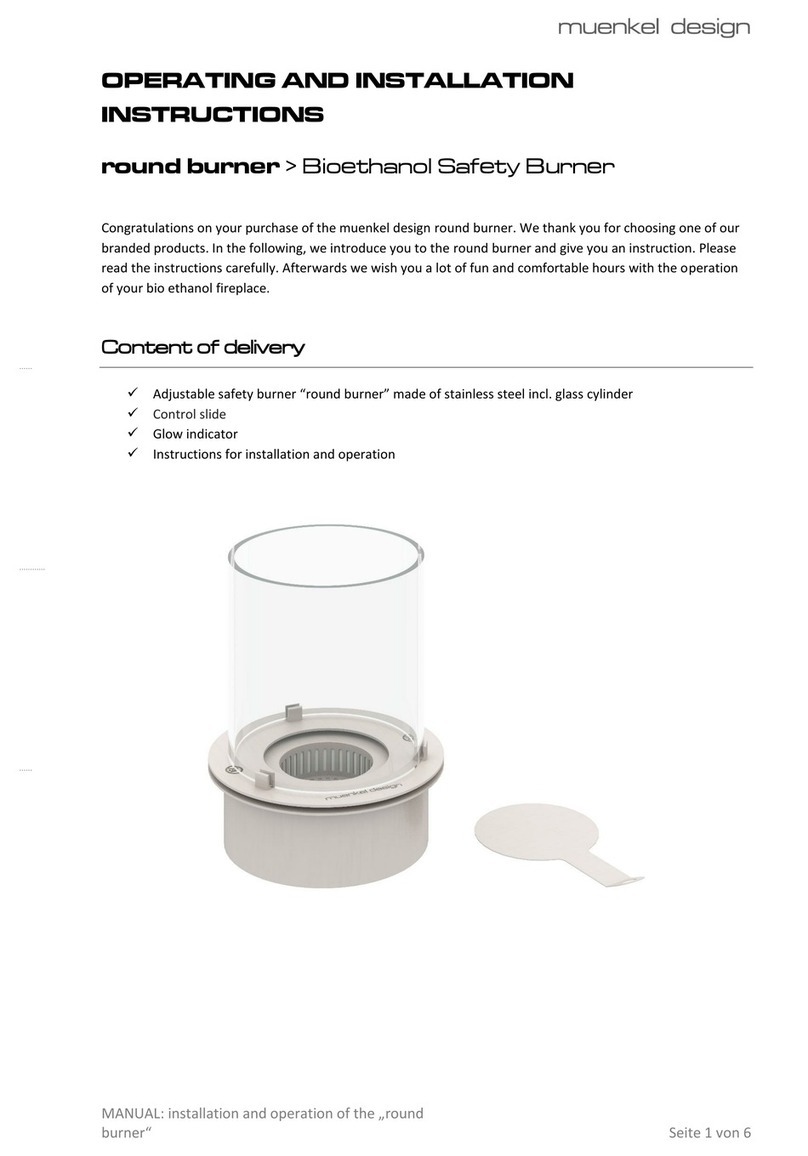
3
INDICE
Dati tecnici . . . . . . . . . . . . . . . . . . . . . . . . . . . . . . . . . . . pagina 4
Accessori . . . . . . . . . . . . . . . . . . . . . . . . . . . . . . . . . . . . . . . . . . . 4
Elenco modelli disponibili. . . . . . . . . . . . . . . . . . . . . . . . . . . . . . . 5
Descrizione bruciatore . . . . . . . . . . . . . . . . . . . . . . . . . . . . . . . . 12
Descrizione quadro elettrico. . . . . . . . . . . . . . . . . . . . . . . . . . . . 12
Imballo - Peso . . . . . . . . . . . . . . . . . . . . . . . . . . . . . . . . . . . . . . 14
Corredo . . . . . . . . . . . . . . . . . . . . . . . . . . . . . . . . . . . . . . . . . . . 14
Ingombro . . . . . . . . . . . . . . . . . . . . . . . . . . . . . . . . . . . . . . . . . . 14
Campi di lavoro . . . . . . . . . . . . . . . . . . . . . . . . . . . . . . . . . . . . . 16
Caldaie . . . . . . . . . . . . . . . . . . . . . . . . . . . . . . . . . . . . . . . . . . . . 16
Caldaia di prova . . . . . . . . . . . . . . . . . . . . . . . . . . . . . . . . . . . . . 16
Installazione . . . . . . . . . . . . . . . . . . . . . . . . . . . . . . . . . . . . . . . 18
Piastra caldaia . . . . . . . . . . . . . . . . . . . . . . . . . . . . . . . . . . . . . . 18
Lunghezza boccaglio . . . . . . . . . . . . . . . . . . . . . . . . . . . . . . . . . 18
Fissaggio del bruciatore alla caldaia . . . . . . . . . . . . . . . . . . . . . 18
Accessibilità parte interna testa . . . . . . . . . . . . . . . . . . . . . . . . . 18
Scelta degli ugelli per il 1° e 2 stadio . . . . . . . . . . . . . . . . . . . . . 18
Montaggio degli ugelli. . . . . . . . . . . . . . . . . . . . . . . . . . . . . . . . . 20
Posizione elettrodi . . . . . . . . . . . . . . . . . . . . . . . . . . . . . . . . . . . 20
Regolazione testa di combustione . . . . . . . . . . . . . . . . . . . . . . . 20
Alimentazione combustibile . . . . . . . . . . . . . . . . . . . . . . . . . . . . 22
Collegamenti idraulici . . . . . . . . . . . . . . . . . . . . . . . . . . . . . . . . . 22
Innesco pompa. . . . . . . . . . . . . . . . . . . . . . . . . . . . . . . . . . . . . . 24
Regolazione bruciatore . . . . . . . . . . . . . . . . . . . . . . . . . . . . . . . 24
Servomotore. . . . . . . . . . . . . . . . . . . . . . . . . . . . . . . . . . . . . . . . 26
Pressostato aria . . . . . . . . . . . . . . . . . . . . . . . . . . . . . . . . . . . . . 28
Controlli finali . . . . . . . . . . . . . . . . . . . . . . . . . . . . . . . . . . . . . . . 30
Manutenzione. . . . . . . . . . . . . . . . . . . . . . . . . . . . . . . . . . . . . . . 30
Funzionamento bruciatore . . . . . . . . . . . . . . . . . . . . . . . . . . . . . 32
Diagnostica programma di avviamento . . . . . . . . . . . . . . . . . . . 34
Sblocco apparecchiatura e utilizzo diagniostica. . . . . . . . . . . . . 34
Incovenienti - cause - rimedi . . . . . . . . . . . . . . . . . . . . . . . . . . . 38
Appendice
Schema quadro elettrico . . . . . . . . . . . . . . . . . . . . . . . . . . . . . . 42
INHALT
Technische Angaben . . . . . . . . . . . . . . . . . . . . . . . . . . . . Seite 6
Zubehör. . . . . . . . . . . . . . . . . . . . . . . . . . . . . . . . . . . . . . . . . . . . . 6
Verzeichnis der Modelle . . . . . . . . . . . . . . . . . . . . . . . . . . . . . . . . 7
Brennerbeschreibung . . . . . . . . . . . . . . . . . . . . . . . . . . . . . . . . . 13
Beschreibung der Schalttafel . . . . . . . . . . . . . . . . . . . . . . . . . . . 13
Verpackung - Gewicht. . . . . . . . . . . . . . . . . . . . . . . . . . . . . . . . . 15
Ausstatung . . . . . . . . . . . . . . . . . . . . . . . . . . . . . . . . . . . . . . . . . 15
Abmessungen . . . . . . . . . . . . . . . . . . . . . . . . . . . . . . . . . . . . . . . 15
Regelbereiche. . . . . . . . . . . . . . . . . . . . . . . . . . . . . . . . . . . . . . . 17
Kessel . . . . . . . . . . . . . . . . . . . . . . . . . . . . . . . . . . . . . . . . . . . . . 17
Prüfkessel . . . . . . . . . . . . . . . . . . . . . . . . . . . . . . . . . . . . . . . . . . 17
Installation . . . . . . . . . . . . . . . . . . . . . . . . . . . . . . . . . . . . . . . . . 19
Kesselplatte. . . . . . . . . . . . . . . . . . . . . . . . . . . . . . . . . . . . . . . . . 19
Flammrohrlänge . . . . . . . . . . . . . . . . . . . . . . . . . . . . . . . . . . . . . 19
Befestigung des Brenners am Heizkessel . . . . . . . . . . . . . . . . . 19
Zugänglichkeit zum Innenteil des Flammkopfs . . . . . . . . . . . . . . 19
Wahl der Düsen für 1. und 2. Stufe. . . . . . . . . . . . . . . . . . . . . . . 19
Düsenmontage . . . . . . . . . . . . . . . . . . . . . . . . . . . . . . . . . . . . . . 21
Position der Elektroden. . . . . . . . . . . . . . . . . . . . . . . . . . . . . . . . 21
Einstellung des Flammkopf. . . . . . . . . . . . . . . . . . . . . . . . . . . . . 21
Brennstoffzuführung . . . . . . . . . . . . . . . . . . . . . . . . . . . . . . . . . . 23
Hydraulikanschlüsse . . . . . . . . . . . . . . . . . . . . . . . . . . . . . . . . . . 23
Einschalten der Pumpe. . . . . . . . . . . . . . . . . . . . . . . . . . . . . . . . 25
Brennereinstellung . . . . . . . . . . . . . . . . . . . . . . . . . . . . . . . . . . . 25
Stellantrieb . . . . . . . . . . . . . . . . . . . . . . . . . . . . . . . . . . . . . . . . . 27
Luftdruckwächter. . . . . . . . . . . . . . . . . . . . . . . . . . . . . . . . . . . . . 29
Endkontrollen . . . . . . . . . . . . . . . . . . . . . . . . . . . . . . . . . . . . . . . 31
Wartung. . . . . . . . . . . . . . . . . . . . . . . . . . . . . . . . . . . . . . . . . . . . 31
Brennerbetrieb . . . . . . . . . . . . . . . . . . . . . . . . . . . . . . . . . . . . . . 33
Diagnostik Betriebsablauf . . . . . . . . . . . . . . . . . . . . . . . . . . . . . . 35
Entriegelung des Steuergeräts und Verwendung der Diagnostik 35
Störungen - Ursachen - Abhilfen. . . . . . . . . . . . . . . . . . . . . . . . . 39
Anhang
Schaltplan . . . . . . . . . . . . . . . . . . . . . . . . . . . . . . . . . . . . . . . . . . 42
CONTENTS
Technical data. . . . . . . . . . . . . . . . . . . . . . . . . . . . . . . . . . .page 8
Accessories . . . . . . . . . . . . . . . . . . . . . . . . . . . . . . . . . . . . . . . . . 8
List of available models . . . . . . . . . . . . . . . . . . . . . . . . . . . . . . . . 9
Burner description . . . . . . . . . . . . . . . . . . . . . . . . . . . . . . . . . . . 13
Description of panel board . . . . . . . . . . . . . . . . . . . . . . . . . . . . . 13
Packaging - Weight . . . . . . . . . . . . . . . . . . . . . . . . . . . . . . . . . . 15
Standard equipment . . . . . . . . . . . . . . . . . . . . . . . . . . . . . . . . . . 15
Max. dimensions . . . . . . . . . . . . . . . . . . . . . . . . . . . . . . . . . . . . 15
Firing rates . . . . . . . . . . . . . . . . . . . . . . . . . . . . . . . . . . . . . . . . . 17
Boilers . . . . . . . . . . . . . . . . . . . . . . . . . . . . . . . . . . . . . . . . . . . . 17
Test boiler. . . . . . . . . . . . . . . . . . . . . . . . . . . . . . . . . . . . . . . . . . 17
Installation . . . . . . . . . . . . . . . . . . . . . . . . . . . . . . . . . . . . . . . . 19
Boiler plate . . . . . . . . . . . . . . . . . . . . . . . . . . . . . . . . . . . . . . . . . 19
Blast tube length. . . . . . . . . . . . . . . . . . . . . . . . . . . . . . . . . . . . . 19
Securing the burner to the boiler . . . . . . . . . . . . . . . . . . . . . . . . 19
Accessibility to the interior of the combustion head . . . . . . . . . . 19
Choice of nozzles for the 1st and 2nd stage . . . . . . . . . . . . . . . 19
Nozzle assembly . . . . . . . . . . . . . . . . . . . . . . . . . . . . . . . . . . . . 21
Position of electrodes. . . . . . . . . . . . . . . . . . . . . . . . . . . . . . . . . 21
Combustion head setting . . . . . . . . . . . . . . . . . . . . . . . . . . . . . . 21
Fuel supply. . . . . . . . . . . . . . . . . . . . . . . . . . . . . . . . . . . . . . . . . 23
Hydraulic connections . . . . . . . . . . . . . . . . . . . . . . . . . . . . . . . . 23
Pump priming . . . . . . . . . . . . . . . . . . . . . . . . . . . . . . . . . . . . . . . 25
Burner calibration . . . . . . . . . . . . . . . . . . . . . . . . . . . . . . . . . . . . 25
Servomotor. . . . . . . . . . . . . . . . . . . . . . . . . . . . . . . . . . . . . . . . . 27
Air pressure switch. . . . . . . . . . . . . . . . . . . . . . . . . . . . . . . . . . . 29
Final checks . . . . . . . . . . . . . . . . . . . . . . . . . . . . . . . . . . . . . . . . 31
Maintenance. . . . . . . . . . . . . . . . . . . . . . . . . . . . . . . . . . . . . . . . 31
Burner operation. . . . . . . . . . . . . . . . . . . . . . . . . . . . . . . . . . . . . 33
Start-up cycle diagnostics. . . . . . . . . . . . . . . . . . . . . . . . . . . . . . 36
Resetting the control box and using diagnostics . . . . . . . . . . . . 36
Faults - Probable cause - Suggested remedy . . . . . . . . . . . . . . 40
Appendix
Panel board layout . . . . . . . . . . . . . . . . . . . . . . . . . . . . . . . . . . . 42
INDEX
Données techniques. . . . . . . . . . . . . . . . . . . . . . . . . . . . page 10
Accessoires. . . . . . . . . . . . . . . . . . . . . . . . . . . . . . . . . . . . . . . . . 10
Modèles disponibles . . . . . . . . . . . . . . . . . . . . . . . . . . . . . . . . . . 11
Description brûleur . . . . . . . . . . . . . . . . . . . . . . . . . . . . . . . . . . . 13
Description tableau électrique. . . . . . . . . . . . . . . . . . . . . . . . . . . 13
Emballage - Poids. . . . . . . . . . . . . . . . . . . . . . . . . . . . . . . . . . . . 15
Equipement standard . . . . . . . . . . . . . . . . . . . . . . . . . . . . . . . . . 15
Encombrement . . . . . . . . . . . . . . . . . . . . . . . . . . . . . . . . . . . . . . 15
Plages de puissance. . . . . . . . . . . . . . . . . . . . . . . . . . . . . . . . . . 17
Chaudières . . . . . . . . . . . . . . . . . . . . . . . . . . . . . . . . . . . . . . . . . 17
Chaudière d’essai . . . . . . . . . . . . . . . . . . . . . . . . . . . . . . . . . . . . 17
Installation . . . . . . . . . . . . . . . . . . . . . . . . . . . . . . . . . . . . . . . . . 19
Plaque chaudière . . . . . . . . . . . . . . . . . . . . . . . . . . . . . . . . . . . . 19
Longueur buse . . . . . . . . . . . . . . . . . . . . . . . . . . . . . . . . . . . . . . 19
Fixation du brûleur à la chaudière. . . . . . . . . . . . . . . . . . . . . . . . 19
Possibilité d’accéder à la partie interne de la tête de combustion. 19
Choix des gicleurs pour 1ère et 2ème allure. . . . . . . . . . . . . . . . 19
Montage des gicleurs . . . . . . . . . . . . . . . . . . . . . . . . . . . . . . . . . 21
Position des électrodes. . . . . . . . . . . . . . . . . . . . . . . . . . . . . . . . 21
Réglage tête de combustion . . . . . . . . . . . . . . . . . . . . . . . . . . . . 21
Alimentation combustible . . . . . . . . . . . . . . . . . . . . . . . . . . . . . . 23
Raccordements hydrauliques . . . . . . . . . . . . . . . . . . . . . . . . . . . 23
Amorçage pompe . . . . . . . . . . . . . . . . . . . . . . . . . . . . . . . . . . . . 25
Réglage brûleur) . . . . . . . . . . . . . . . . . . . . . . . . . . . . . . . . . . . . . 25
Servomoteur . . . . . . . . . . . . . . . . . . . . . . . . . . . . . . . . . . . . . . . . 27
Pressostat de l’air . . . . . . . . . . . . . . . . . . . . . . . . . . . . . . . . . . . . 29
Contrôles finaux . . . . . . . . . . . . . . . . . . . . . . . . . . . . . . . . . . . . . 31
Entretien . . . . . . . . . . . . . . . . . . . . . . . . . . . . . . . . . . . . . . . . . . . 31
Fonctionnement brûleur . . . . . . . . . . . . . . . . . . . . . . . . . . . . . . . 33
Diagnostic cycle de démarrage. . . . . . . . . . . . . . . . . . . . . . . . . . 37
Déblocage du coffret de sécurité et utilisation de la
fonction diagnostic . . . . . . . . . . . . . . . . . . . . . . . . . . . . . . . . . . . 37
Inconvénients, causes probables, remèdes conseillés. . . . . . . . 41
Annexe
Schéma tableau électrique . . . . . . . . . . . . . . . . . . . . . . . . . . . . . 42


